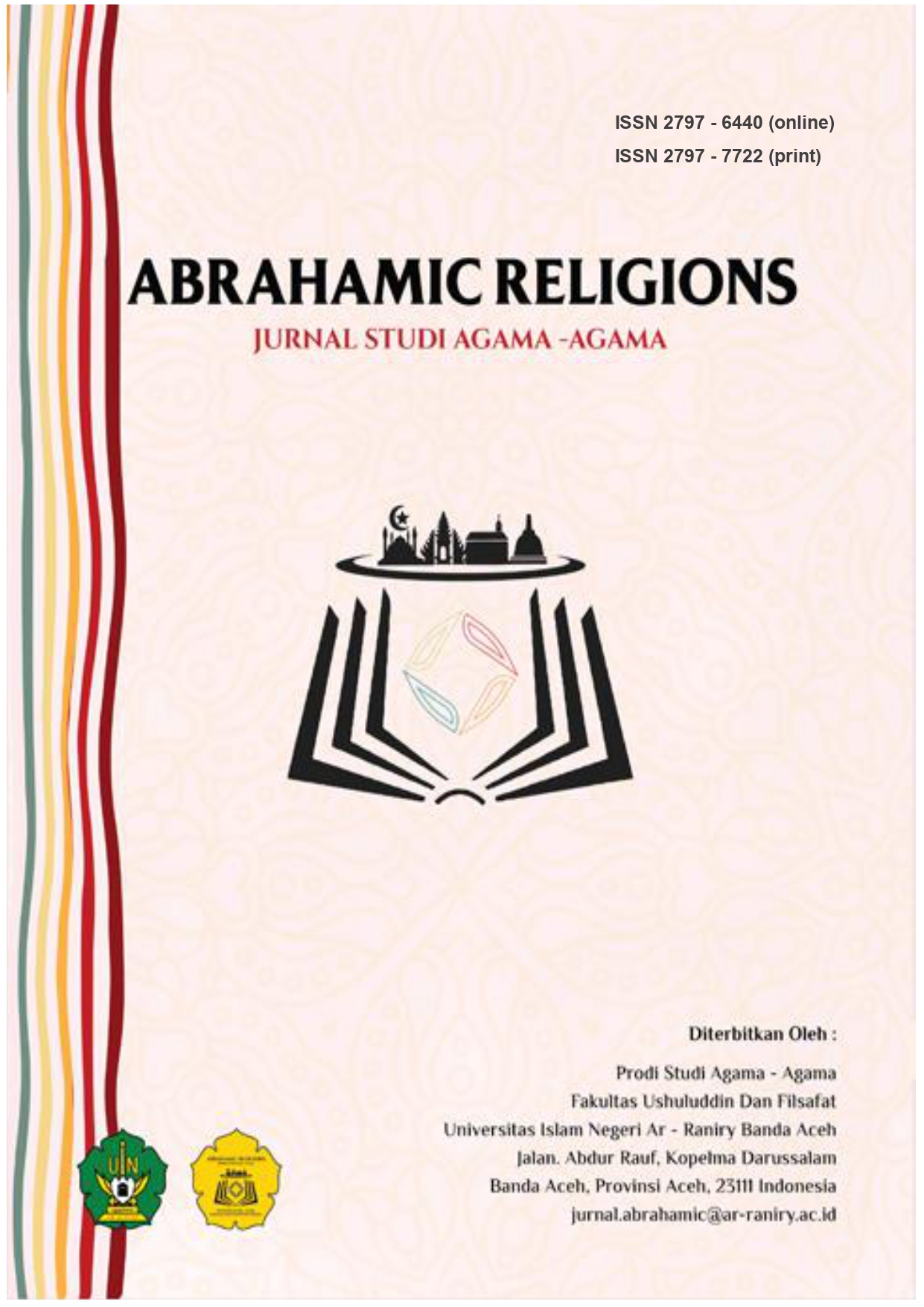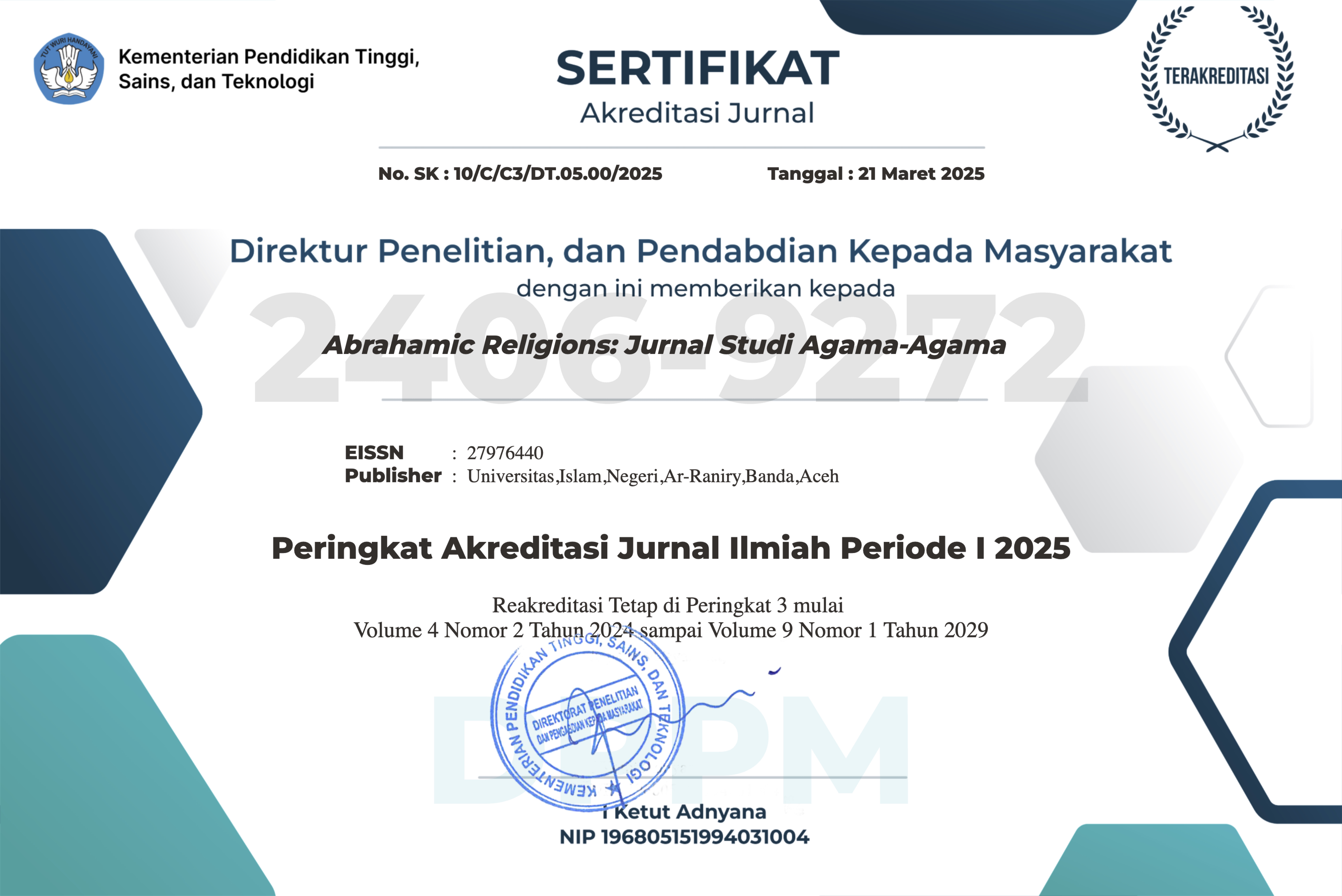Imam Mahdi in Sunni Tradition: Differences in Beliefs and Interpretations
DOI:
https://doi.org/10.22373/arj.v3i2.20555Keywords:
Imam Mahdi, Sunni, Differences, Beliefs, InterpretationsAbstract
The concept of Imam Mahdi holds a special place, but differences in beliefs and interpretations regarding Imam Mahdi within the Sunni community have led to confusion and even disputes among Muslims. To gain a deeper understanding of how Imam Mahdi is viewed from the perspective of Sunni tradition and the differences in beliefs and interpretations, this research will delve into the complexities of these views and identify different frameworks of understanding. This will help us appreciate the diversity of Islamic thought and how these understandings impact religious practices and the perspectives of Muslim communities. Furthermore, it will underscore the importance of inter-sectarian dialogue in today's increasingly complex Muslim society. The research method employed in this study is a literature review, based on the analysis and synthesis of relevant literature on the specific research topic. Titled "Imam Mahdi in the Perspective of Sunni Tradition: Differences in Beliefs and Interpretations," the findings suggest that al-Mahdi plays a crucial role in elevating the status of Islam and the Muslim community to their true potential. This will enable the Muslim community to shield itself from the negative effects of materialistic modernization and blind imitation of traditions that may not align with Islamic values, as conveyed by the Prophet Muhammad (peace be upon him). The term 'Mahdi' refers to an eschatological figure in Islam, believed to come in the end times to establish justice throughout the world. In the Shia Islamic perspective, Mahdi is the twelfth Imam, and according to their beliefs, he will appear at some point in the future.
References
Abdur-Rahman Ibrahim Doi. (1987). “Sunnism”. Dalam Islamic Spirituality: Foundations, disunting S.H. Nasr. Crossroad.
Abi Dawud Sulaiman bin Asy’as al-Sijistani. (n.d.). Sunan Abi Dawud. Baitul Afkar al- Dauliyah.
Abubakar, S. (2020). AL-IMAM AL-MAHDI AL-MUNTADHAR PERSPEKTIF SUNNI SYI’AH. FiTUA: Jurnal Studi Islam, 1(1). https://doi.org/10.47625/fitua.v1i1.231
Ahmad Muhammad Subki. (n.d.). Nazariyat al-Imamat lada al-Syi’ah Isna Asyariyah Tahlil al-Falsafi li al-Qaidah. Dar al-Ma’arif.
Ensiklopedi Islam. (2005). Ichtiar Van Hoeve.
H.M. Rasyidi. (n.d.). Imam Mahdi dan Harapan Akan Keadilan. Prisma, VI.
Ibn Khaldun. (2000). Muqaddimah Ibn Khaldun, terj. Ahmadi Toha. Pustaka Al-Kausar.
Jaber Bolushi. (n.d.). Ramalan Paling Mengguncangkan Abad ini; Oktober 2015 Imam Mahdi Akan Datang. Papyrus Wahana Rejeki.
Nuh, M. (2020). KONSEP AL-MAHDI DALAM TEOLOGI SYI’AH DAN SUNNI. Al-Ikhtibar: Jurnal Ilmu Pendidikan, 6(2), 687–713. https://doi.org/10.32505/ikhtibar.v6i2.609
Paul Boyer. (2008). “The Foreordained Future: Apocalypse Thought in the Abrahamic Religions”. The Hedgehog Review. Spring.
Ritonga, M. T., Suaidi, P., Harahap, N. R., & Trikusuma, S. (2022). IMAM MAHDI DALAM PERSPEKTIF HADIS. HIBRUL ULAMA, 4(2). https://doi.org/10.47662/hibrululama.v4i2.264
Saifuddin Anwar. (2001). Metode Penelitian. Pustaka Pelajar Offset.
Smith, J. (2000). Imam Mahdi in Twelver Shia Islam: A Historical Analysis. Journal of Religious Studies, Vol. 20, N.
Sutrisno Hadi. (2002). Metodelogi Research. Andi Offset.
Syarafuddin Al-Mus-awi. (1983). Dialog Sunnah dan Syi’ah, terj. Muhammad al-Baqir. Mizan.
Syeikh Mutawalli Sya’rawi. (2006). Kemunculan Nabi Isa, Imam Mahdi, dan Dajjal, terj. Qultummedia.
Wejak, J. L. (2018). ESKATOLOGI ISLAM SHIA: ESKATOLOGI DUA DIMENSI | SHIA ISLAMIC ESCHATOLOGY: A TWO DIMENSIONAL ESCHATOLOGY. Jurnal Ledalero, 17(2). https://doi.org/10.31385/jl.v17i2.146.203-221
Wilferd Madelung. (1986). Al-Mahdi”. Dalam The Encyclopedia of Islam. A New Edition, disunting C. E. Bosworth, E. V. Donzel, B. Lewis dan C. H. Pellat. Vol. V. E. J. Brill.
Downloads
Published
Issue
Section
License
Authors who publish in this Journal agree to the following terms:
- Authors retain copyright and grant the journal right of first publication with the work simultaneously licensed under Attribution-ShareAlike 4.0 International (CC BY-SA 4.0) allows others to share the work with an acknowledgment of the work's authorship and initial publication in this journal.
- Authors are able to enter into separate, additional contractual arrangements for the non-exclusive distribution of the journal's published version of the work (e.g., post it to an institutional repository or publish it in a book), with an acknowledgment of its initial publication in this journal.
- Authors are permitted and encouraged to post their work online (e.g., in institutional repositories or on their website) prior to and during the submission process, as it can lead to productive exchanges, as well as earlier and greater citation of published work. (See The Effect of Open Acces)















